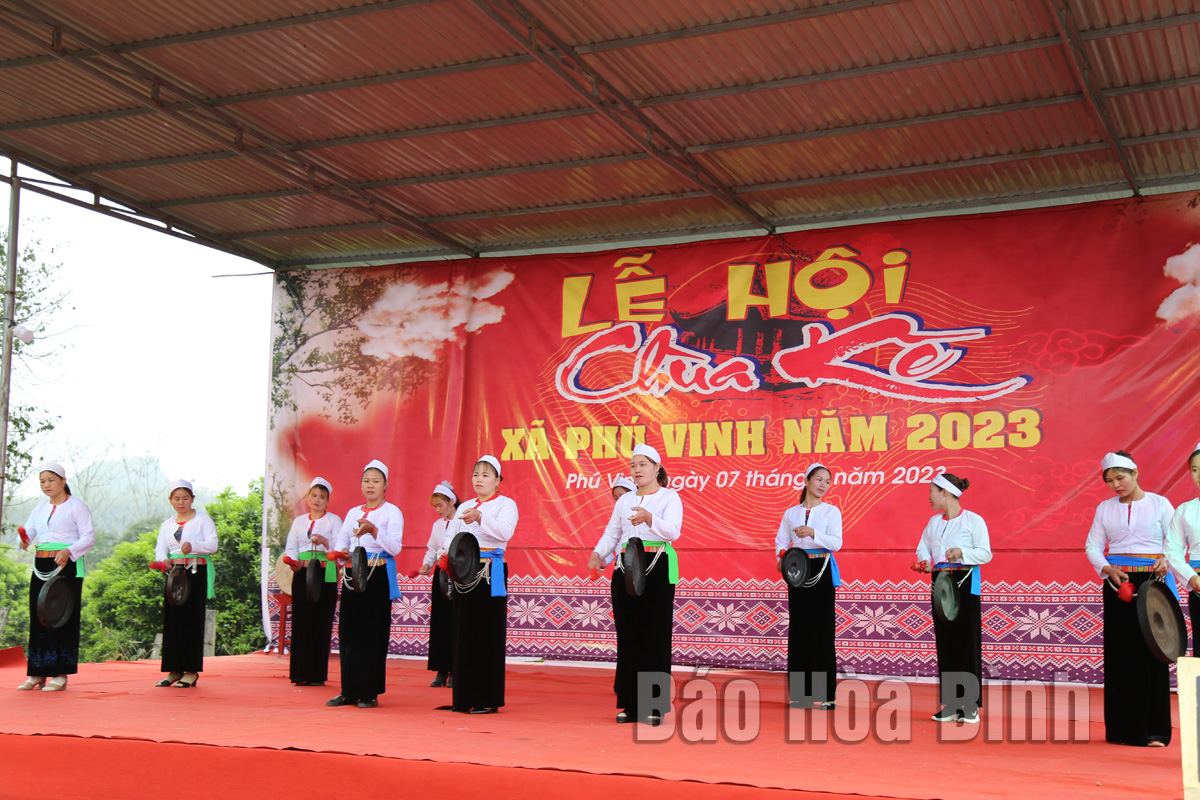
(HBO) - In 2 days, March 6th and 7th, the fesstival of Ke pagoda in 2023 took place in Phu Vinh commune (Tan Lac).

The performance of Muong gongs at the festival.
The festival of Ke Pagoda is the first clearing ceremony of the year, according to the Muong language is "Le tha Cha chua”. The festival is a religious and community activity associated with wet-rice agriculture in order to return to the roots and express the gratitude to the Buddha and the village lords who have helped the people to build Ke ditch to bring water to the fields, teach the people to build the land and establish Muong area. It is also to wish for a year of favorale rain, the peaceful wind, which is full of happiness. The festival is also an opportunity for people to meet, exchange, tighten the solidarity and propagate the preservation and promotion of the national cultural identity in the customs and culinary life of the local people.
At the festival, the delegates and the local people had an opportinity to watch the concert of Muong gongs and the special cultural performances imbued with the national identity; visiting the stalls displaying the traditional handicraft products, the ethnic musical instruments and the cuisine. The festival organizing board organized the competitions in sports and folk games such as aray fighting, cotton ball throwing, stall dancing, swings, stilt walking, volleyball, etc.
The People’s Committee of Lac Son district held a ceremony on April 28 to receive the provincial relic certificate for the ancient rock carving site at Suoi Co stream, located in My Thanh commune.
A special music show titled "The country is in the fullness of joy” has been held at Hoa Binh Square in Hoa Binh city in celebration of the 50th anniversary of the liberation of the South and national reunification (April 30, 1975–2025).
The People's Committee of Lo Son commune, Tan Lac district, has organised the local annual traditional stream fishing festival on April 19 - 20.
As a land deeply intertwined with human history and Vietnam’s millennia-long journey of nation-building and defence, Hoa Binh is often revered for its epic tales and legends.
Residents of Hoa Binh boast a rich cultural identity, reflected in their unique language, traditional attire, customs, and folk melodies – described as "sweet as honey, clear as a mountain stream.”
Lac Son district’s Vu ban town held the 2025 Truong Kha temple festival on April 12–13 (the 15th–16th days of the third lunar month). Since its revival in 2019, the festival has been organised every three years, preserving valuable intangible heritage while meeting the community’s cultural and spiritual needs.



